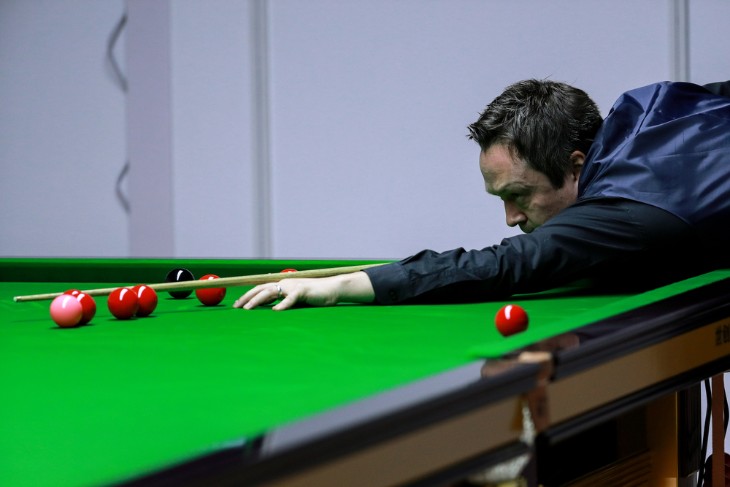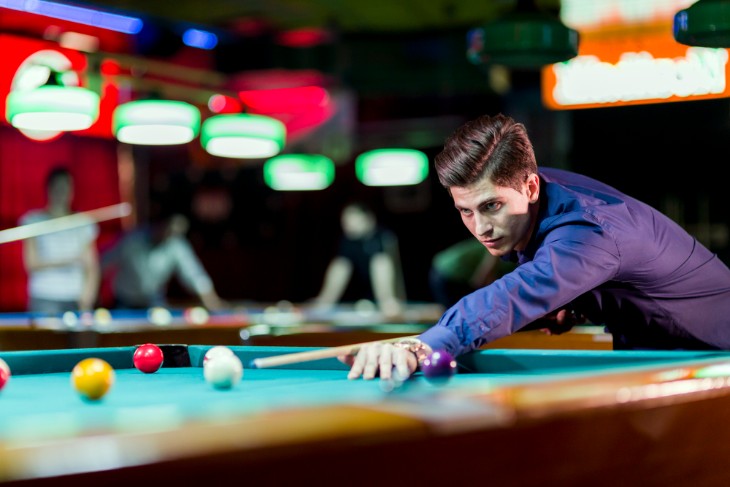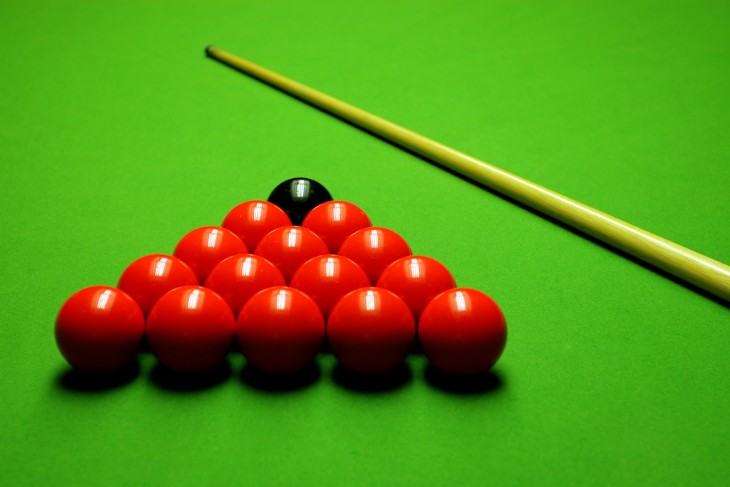Welcome to our guide on snooker equipment maintenance, tailored for both experienced players and beginners. This guide covers essential aspects of caring for your snooker table, cues, and balls, ensuring they remain in top condition for the best gaming experience. We'll provide practical tips on table leveling, cue care, and ball maintenance, helping you improve your game and extend the life of your equipment. Dive in to discover valuable insights into effective snooker equipment upkeep.
Snooker Table Maintenance
Regular Cleaning
Regular cleaning of a snooker table is crucial for maintaining its playing surface and ensuring a smooth, consistent gameplay experience. Dust, chalk residue, and other debris can accumulate on the table's cloth, affecting ball movement and accuracy. To clean the table, start by gently brushing the surface with a specialized snooker table brush. This soft-bristle brush is designed to remove dust and chalk particles without damaging the cloth. Brush in straight lines, following the natural nap of the cloth.
After brushing, use a microfiber cloth slightly dampened with water to wipe the table, removing any remaining dirt and residue. Avoid using harsh chemicals or abrasive materials, as they can damage delicate cloth fibres and affect the table's playability. Regular cleaning not only preserves the table's appearance but also ensures that the balls roll smoothly, allowing for precise shots and an enjoyable gaming experience for players of all levels.
Protective Cover
A protective cover for your snooker table is a valuable investment that can significantly extend the life and quality of your playing surface. These covers are typically made from heavy-duty materials like vinyl or canvas and are designed to fit your specific table size and shape.
- Dust and Debris Protection: One of the primary functions of a protective cover is to shield your snooker table from dust, dirt, and other debris. Even in a well-kept room, fine particles can settle on the table surface, affecting the cloth and ball movement. A cover acts as a barrier, keeping your table clean and ready for play.
- Spill and Liquid Protection: Accidental spills can wreak havoc on a snooker table. Whether it's a glass of water, soda, or any other liquid, a spill can stain the cloth and potentially damage the table's structure. A cover provides a waterproof layer, preventing liquids from seeping through and causing harm.
- Sunlight and Fading Prevention: Prolonged exposure to sunlight can cause the colours of your table cloth and the table itself to fade over time. A cover blocks out sunlight, preserving the vibrant colours of the cloth and maintaining the aesthetic appeal of your snooker table.
- Preventing Uneven Wear: If your snooker table is placed in an area with high foot traffic, a cover safeguards it from accidental scratches, dings, or uneven wear caused by items placed on the table. This ensures that the playing surface remains level and smooth for consistent gameplay.
- Custom Fit and Easy Removal: Protective covers are designed to fit your specific table dimensions snugly. They often come with straps or drawstrings that secure the cover in place, providing a tailored fit. Additionally, they are relatively easy to remove when you're ready to play, allowing for quick setup without the hassle of cleaning the entire table.
Levelling
Levelling a snooker table is a crucial aspect of maintenance that directly impacts gameplay. A perfectly level table ensures that balls roll true and predictably, without biasing towards any particular direction.
- Importance of Leveling: A level table is essential for fair gameplay. If the table is uneven, balls can roll off course, leading to inaccurate shots and frustrating gameplay. Levelling is necessary to maintain the integrity of the game, especially in professional or serious amateur settings.
- Checking for Level: To check if your table is level, use a carpenter's spirit level. Place it on various parts of the table, including the playing surface and the cushion rails. If the bubble inside the level is centred, the table is level. If not, adjustments are needed.
- Adjusting the Legs: Most snooker tables have adjustable legs to compensate for uneven flooring. Adjust the table legs using built-in leg levellers or shims until the table is perfectly level. It's a precise process that might require patience to get it just right.
- Professional Help: While minor adjustments can often be made by adjusting the table legs, for significant levelling issues, it's advisable to seek professional help. Professional technicians have the expertise and specialized tools to level the table accurately.
- Regular Checks: Factors like temperature and humidity can cause the table to shift slightly over time. Regularly check the table's level and make adjustments as needed, especially if the table is in a location where temperature and humidity fluctuations are common.

Ironing the Cloth
Ironing the cloth on a snooker table is a process aimed at restoring the smoothness and evenness of the playing surface. Over time, the cloth can develop wrinkles, bumps, or uneven areas due to regular use, humidity, or temperature changes. Ironing helps in removing these imperfections, ensuring a consistent and level playing field.
- Purpose of Ironing: The primary purpose of ironing the snooker table cloth is to eliminate any wrinkles or unevenness. These imperfections can affect the path of the balls, leading to inaccurate shots and disrupting the flow of the game. Ironing the cloth helps in maintaining a flat and smooth surface, ensuring fair and accurate gameplay.
- Professional Service: Ironing the snooker table cloth is a delicate process that requires precision and expertise. Professional technicians often perform this task using specialized steam irons designed for snooker tables. They have the knowledge and experience to apply the right amount of heat and pressure to remove wrinkles without damaging the cloth.
- Steam Ironing: Steam irons are commonly used for this purpose because they provide controlled heat and moisture. The steam helps relax the cloth fibres, making it easier to smooth out wrinkles. The technician moves the iron carefully across the cloth, ensuring uniform pressure to avoid creating new wrinkles or damaging the fabric.
- DIY Caution: While there are tutorials available for DIY tablecloth ironing, it's a task best left to professionals. Applying excessive heat or pressure or using the wrong technique can damage the cloth irreparably, leading to the need for costly replacements.
- Frequency of Ironing: The frequency of ironing depends on the usage of the table. For heavily used tables in commercial settings, ironing might be required more frequently than tables used in private homes. Regular maintenance, including brushing and covering the table when not in use, can help reduce the frequency of ironing.
- Post-Ironing Care: After ironing, it's essential to allow the cloth to cool and settle before playing. Rushing into a game immediately after ironing could lead to uneven ball movement. Allowing the cloth to rest ensures that it maintains its smoothness and flatness during gameplay.
Snooker Cue Maintenance
Snooker cues also require regular maintenance to ensure optimal performance and longevity. Proper care not only enhances your gameplay but also preserves the cue's appearance and structural integrity.
1. Cleaning the Cue:
- Shaft: Wipe the cue shaft after every game with a clean, slightly damp cloth to remove oils, sweat, and chalk residue. Avoid using abrasive materials as they can damage the wood.
- Butt: Clean the butt (handle) of the cue in the same way. If it's made of wood, be especially gentle to avoid scratches.
2. Polishing the Cue:
Use a cue wax or specialized cue cleaner and a soft cloth to polish the cue occasionally. This maintains the cue's finish and keeps it smooth.
3. Tip Care:
- Scuffing: Regularly scuff the cue tip with a cue tip scuffer or shaper. This roughens the surface, ensuring proper chalk adhesion and reducing miscues.
- Chalking: Always chalk the cue before each shot. Proper chalking prevents slips and helps in precise shots.
4. Replacing the Tip:
- If the tip becomes flat, worn, or loses its shape, it's time for a replacement. Most players prefer a specific type and hardness of tip, so choose one that suits your playing style.
- Tip replacement should ideally be done by a professional cue technician for precise shaping and attachment.
5. Avoiding Extreme Temperatures:
Don't expose your cue to extreme temperatures or humidity, as these can cause the wood to warp or crack.
6. Proper Storage:
Store your cue in a cue case when not in use. This protects it from physical damage, moisture, and temperature fluctuations.
7. Checking for Damage:
Regularly inspect your cue for any signs of damage like cracks, dents, or warping. Address any issues promptly to prevent further damage.
8. Avoiding Impact:
Be mindful of where you place your cue. Avoid leaning it against walls or tables where it could fall or get knocked over.
9. Professional Maintenance:
Periodically, consider taking your cue from a cue repair professional. They can perform tasks like re-tipping, re-ferruling, or cleaning the cue thoroughly.
10. Cue Extension:
If you use a cue extension, make sure it's properly attached and doesn't put undue stress on the cue joint.
Snooker Ball Maintenance
1. Cleaning the Balls:
Clean snooker balls regularly using a mild soapy water solution and a soft cloth. Gently wipe each ball to remove dirt, chalk residue, and hand oils. Avoid abrasive cleaners or rough materials that can scratch the balls' surface.
2. Polishing the Balls:
Polish the balls with a clean, dry cloth to maintain their shine. Regular polishing helps in keeping the balls smooth, ensuring accurate rolling and ball-to-ball interaction during play.
3. Checking for Damage:
Regularly inspect the balls for signs of damage such as chips, cracks, or uneven surfaces. Damaged balls can affect the game and should be replaced promptly.
4. Storing the Balls:
Store snooker balls in a clean, dry box or tray when not in use. This prevents dust and dirt accumulation and ensures that the balls are ready for play at any time.
5. Avoiding Impact:
Handle snooker balls with care to avoid unnecessary impacts or dropping. Even though they are made from high-quality materials, rough handling can cause damage over time.

6. Rotation of Balls:
To distribute wear evenly, rotate the position of the balls regularly, especially if some balls are used more frequently than others. This helps maintain a consistent rolling pattern.
7. Professional Cleaning:
Consider professional ball-cleaning services if your balls are heavily soiled or stained. Professionals have specialized equipment and cleaning agents to restore the balls to their original condition.
8. Avoiding Extreme Temperatures:
Store snooker balls in a stable environment, avoiding extreme temperatures and humidity. Sudden temperature changes can affect the balls' roundness and balance.
9. Replacement:
Over time, snooker balls wear out, losing their original lustre and smoothness. If polishing and cleaning don't restore their performance, it might be time to invest in a new set of balls for accurate and enjoyable gameplay.
General Tips
- Consistent Environment: Maintain a consistent room temperature and humidity level where the snooker table is placed. Fluctuations in these factors can affect the table cloth and the balls' behavior.
- Regular Inspection: Periodically inspect the entire snooker setup, including the table, cues, and balls. Look for signs of wear, damage, or irregularities and address them promptly.
- Proper Lighting: Ensure the playing area is well-lit to avoid eye strain and to clearly see the table markings and balls. Lighting should be evenly distributed across the table.
- Proper Chalking: Chalk your cue properly before each shot. This enhances cue-tip friction with the cue ball, reducing the chance of miscues.
- Proper Stance and Stroke: Work on your stance and stroke. A stable and consistent stance, along with a smooth and straight stroke, is essential for accurate shots.
- Practice Regularly: Practice is key to improving your skills. Regular practice sessions enhance your precision, control, and overall gameplay.
- Respect Equipment: Treat snooker equipment with respect. Avoid leaning on the table, placing heavy objects on it, or using cues inappropriately. Proper care extends the life of your equipment.
- Etiquette: Learn and observe snooker etiquette. This includes not disturbing your opponent, refraining from distracting movements, and acknowledging good shots made by your opponent.
- Sportsmanship: Practice good sportsmanship. Whether you win or lose, maintain a positive attitude and show respect for your opponent.
- Stay Focused: Concentration is crucial in snooker. Stay focused on the game, avoid distractions, and think through your shots before making them.
- Continuous Learning: Snooker is a game of skill and strategy. Continuously learn new techniques, practice different shots, and study professional players to enhance your game.
Summary
In conclusion, maintaining snooker equipment at home is essential for ensuring consistent gameplay and the longevity of your table, cues, and balls. Regular cleaning, proper storage, and careful handling are fundamental practices to preserve the quality of your equipment. Additionally, paying attention to details such as levelling the table, ironing the cloth, and keeping cues well-maintained significantly contribute to the overall snooker experience. Following these tips and tricks not only enhances the performance and lifespan of your equipment but also ensures that you enjoy the game to its fullest potential. By combining proper maintenance with dedicated practice and respect for the game's etiquette, you can create an ideal environment for honing your snooker skills and relishing the excitement of the sport right in your own home.
For more information:




.webp)


 (1).webp)




















